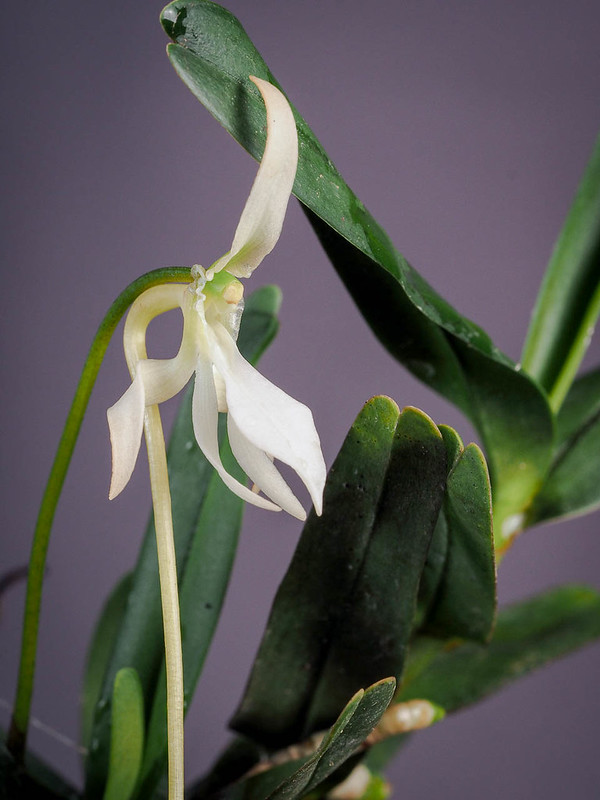
Summer in Alaska is gorgeous, but too short. But the summer is gone, and the leaves are already turning yellow; we'll have a busy month to get ready for the winter. We had unusually wet summer, and we didn't have to water our outside garden at all! Also, we had almost no smoke from the forest fire, which is unusual.
I received this plant in summer 2015 from Malala Orchids when Botanica Ltd was organizing the group order. Unfortunately, this was my first and last order from Malala. Malala has been rescuing orchids from rapid destruction of the forests in Madagascar, and went through the trouble of getting permits to export legally and properly. The owner of Malala, Michelle Andriamanamihaja, passed away earlier this year. Here is a link to a nice post about this by Gilles Grunenwald in his awesome blog.
This plant was labelled as Jumellea intricata. But when it flowered, it was not the correct identification. I attempted to key it out with Cribb and Hermans (2009), and I ended up as J. confusa. However, when I contacted Gilles, an angraecoid expert, he thought that it resembles to his J. flavescens and suggested me to contact Johan Hermans. He also thought that my plant looks like J. exilis; according to a recent paper about the molecular systematics of Jumellea (Rakotoarivelo et al. 2012, link below), J. flavescens is proposed to be a synonym of J. exilis. Obviously it is not easy to give a definite identification just from photos, so it may not be correct but I'm following the suggestions by the two experts. Thank you Gilles and Johan!
Here is a measurement I took from this flower:
Leaf: 74 mm long, 14mm wide
Internode: 10mm long
Inflorescence: 90mm long
Pedicel with ovary: 59mm long
Dorsal sepal: 21mm long, 4mm wide
Lateral sepals: 22mm long, 2mm wide
Petals: 22mm long, 4mm wide
Lip: 22mm long, 9mm wide.
Central keel at the base of the lip: 9 mm long
Spur: 133mm long
Column: 3.5mm long, 3mm wide
Habitat: In Madagascar, this species is found in Antananarivo and Antsiranana in Mossy, montane forest at approximately 1200m of elevation (Cribb & Hermans 2009, p. 320 described as a synonym, J. flavescnes). This species is rare in Réunion. More recently, Baider et al (2012) visited the natural population and confirmed that this species occurs in Mauritius (very rare). They reported the habitat of this species in Mauritius; the species is an epiphyte in transitional and evergreen forget (400-650m elev.) on canopy trees of 10-18m high and lithophytic on steep cliffs at about 800m elevation.
Culture: I'm growing it at the cool end of intermediate; max/min of 27/18C (80/65F) in the summer and 18/13C (65/55F) in the winter. I'm using relatively weak light (a little bit more than Paphiopedilum), but from the habitat description, it may prefer more light. I have had it only 1 year, so I'm not sure if this is a good condition or not, but it has been growing rapidly (compare the photo of the whole plants below from now and 1 year ago).
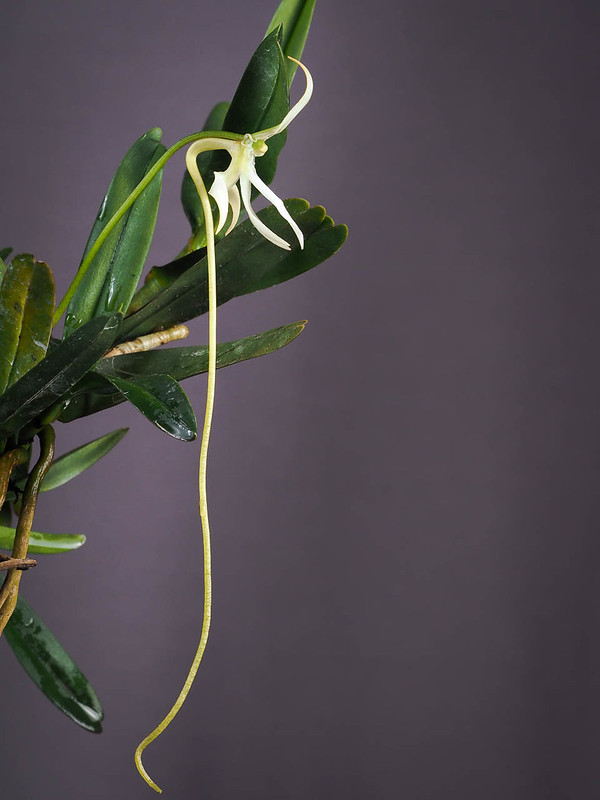 |
| The elegant spur is 133mm long. |
I think a big thing can be achieved by openness. I'm not saying that my photos are going to change the world, but one example of achievement is Wikipedia. Their contents are usually under "copy-left" license such as CC license. Can you imagine the world without Wikipedia? It is probably the first place I start to learn new things, and the massive resource has been built up by the general public. If nobody shares and contribute their knowledge, we don't have this wonderful resource.
So you might want to think about it next time when you post a photo (even snapped by cell phones), why are you posting it?
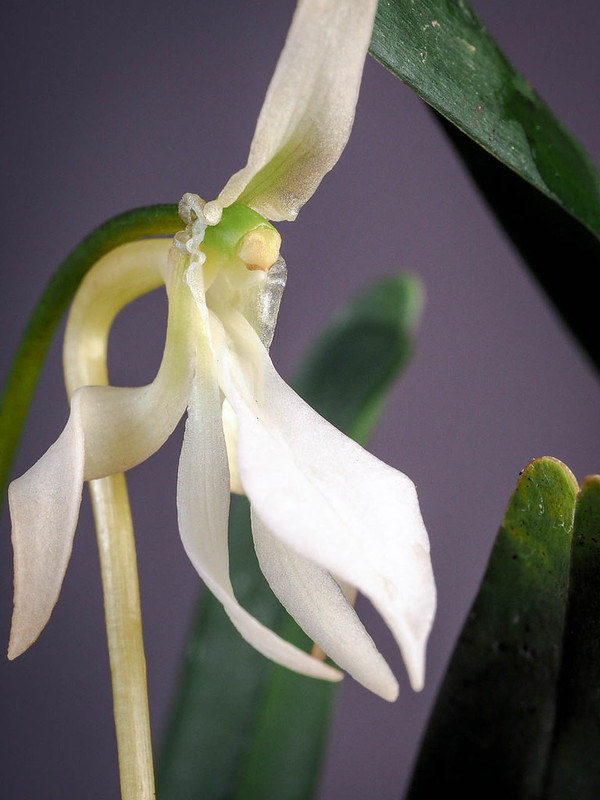
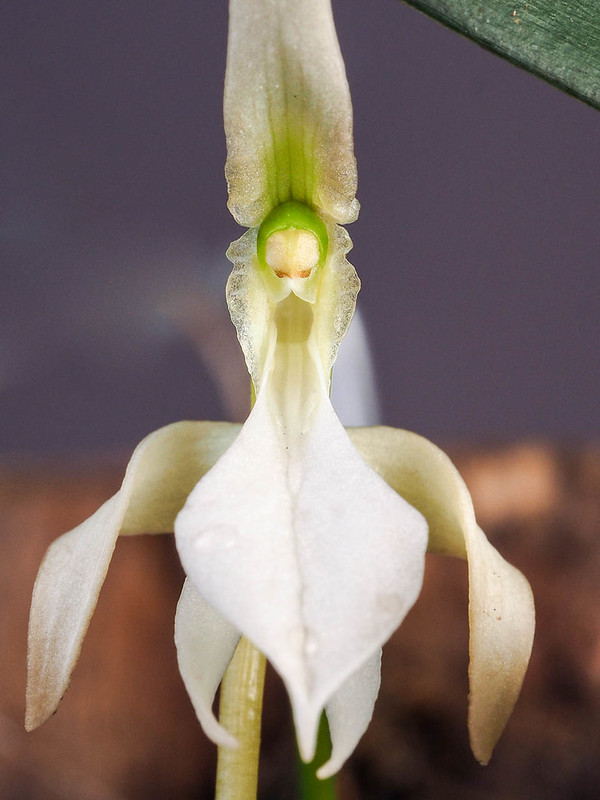 |
| The central keel at the base of the lip is pretty cool. |
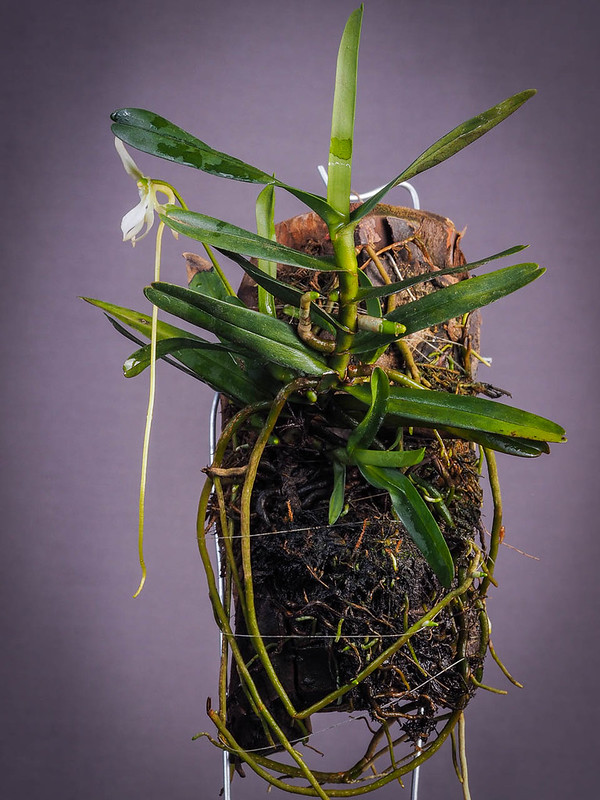
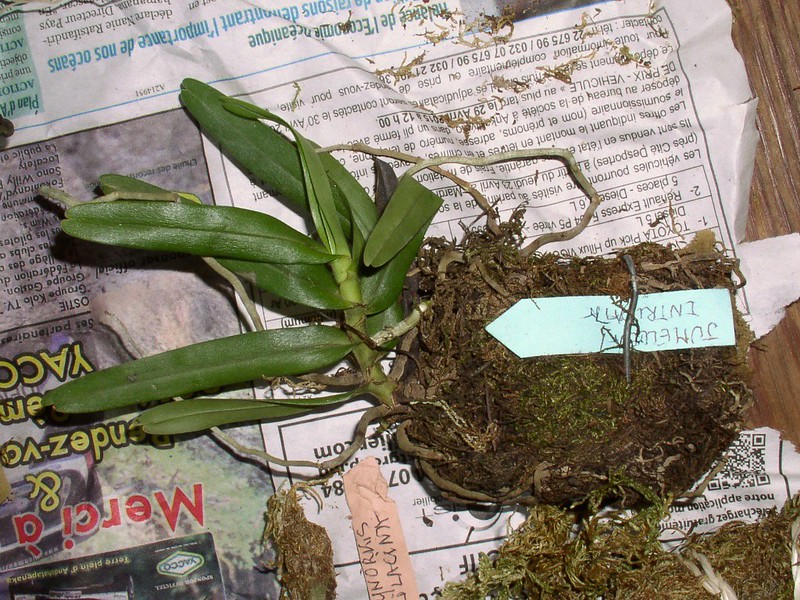 |
| The initial condition when I received it in summer 2015. |
Baider, C., F. B. V. Florens, F. Rakotoarivelo, J. Bosser, T. Pailler. 2012. The new records of Jumellea (Orchidaceae) for Mauritius (Mascarene Islands) and their conservation status. Phytotaxa 52: 21-28. (link to Research Gate).
Cribb, P. and J. Hermans, 2009. Field Guide to the Orchids of Madagascar, Kew Publishing, UK.
Rakotoarivelo, F. P., S. G. Razafimandimbison, B. Mallet, L. Faliniaina, and T. Pailler. 2012. Molecular systematics and evolutionary trends and relationships in the genus Jumellea (Orchidaceae): Implications for its species limits. Taxon 61(3): 534-544. (link to pdf on Research Gate)
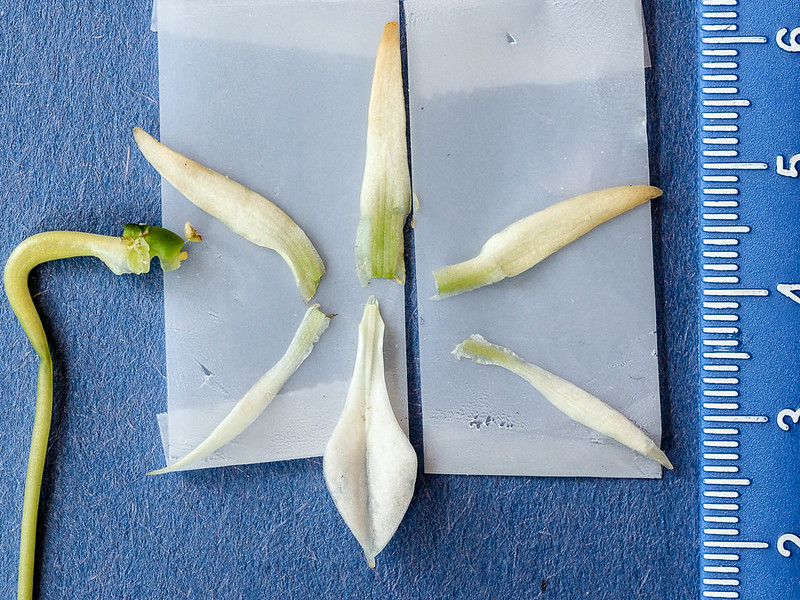
Comments
Post a Comment